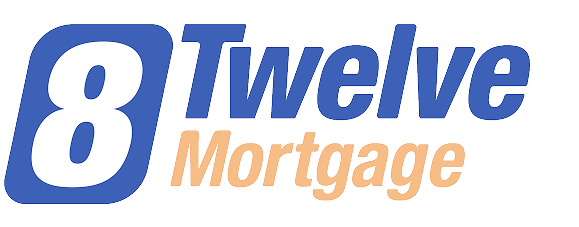
Summary
- Understanding Trudeau's $250 rebate and tax break. The tax break offers GST/HST exemptions on essential goods from December 14, 2024, to February 15, 2025, while the $250 Working Canadians rebate, distributed in spring 2025, supports eligible individuals earning up to $150,000 in 2023. Together, these initiatives aim to provide financial relief during high-cost periods.
- Eligibility and details for the $250 rebate. To qualify, individuals must meet criteria such as working in 2023, earning under $150,000, filing a tax return, and being a Canadian resident on March 31, 2025. Payments will be issued automatically via direct deposit or cheque by the CRA.
- Maximizing the rebate's impact. Use the rebate strategically by prioritizing essential expenses, paying down high-interest debt, or starting a savings habit. These measures can help stretch the rebate's value amidst rising costs and economic challenges.
Have you seen the news?
The Government of Canada is introducing a tax suspension starting mid-December to make holiday spending a little less painful. But are you eligible? And how do you redeem it? And where's this $250 everyone's talking about?
In this quick explainer, we'll cover:
- What the tax break and rebate are all about
- Which items are included
- What makes you eligible
- How & when you'll receive your money
- Tips for spending the rebate
Let's get into it.
By the way — not covered by the rebate? Holiday spending can be challenging, but if you're a homeowner, we can help. Lotly works with a nationwide network of 50+ lenders to find you secured loan options tailored for your financial health, with much better rates than personal loans. Book a free consultation to get started today.
What are the details of Trudeau's $250 rebate and tax break?
There are actually two things happening here:
- A tax break for all Canadians.
- The Working Canadians rebate.
Tax break
Starting December 14, 2024, the Canadian government rolls out a temporary Goods and Services Tax/Harmonized Sales Tax (GST/HST) exemption on various essential goods. Here's the lowdown:
- What: A two-month suspension of GST/HST on select items, aiming to make essential purchases more affordable for Canadians.
- How: Businesses will stop charging GST/HST on qualifying goods.
- When: From December 14, 2024, to February 15, 2025.
- Where: Applicable nationwide, across all provinces and territories.
- Why: To provide financial relief amid rising living costs and inflation, especially during the holiday season.
- Who Benefits: All Canadians purchasing the specified essential goods during this period.
This initiative is projected to deliver approximately $1.6 billion in federal tax relief, offering tangible savings at the consumer checkout.
- For example, a family spending $2,000 on qualifying items could save about $100 in GST.
- In provinces with HST, like Ontario, the same spending could result in savings of up to $260.
By temporarily removing the GST/HST on these essential goods, the government aims to ease financial pressures for Canadians during a typically high-spending season.
Working Canadians Rebate
In early spring 2025, the Canadian government will also issue a one-time, tax-free $250 Working Canadians Rebate to eligible individuals. Here's a breakdown:
- What: A $250 tax-free rebate to provide financial relief to working Canadians.
- When: Disbursements are scheduled for early spring 2025.
- Where: Applicable nationwide, across all provinces and territories.
- Who Benefits: Approximately 18.7 million Canadians who meet the eligibility criteria, including having worked in 2023 and earned up to $150,000 in individual net income.
Which items are included in the tax break?
Groceries and beverages:
- Prepared foods: veggie trays, pre-made meals, salads, and sandwiches.
- Snacks: chips, candy, granola bars, and similar items.
- Alcoholic beverages: beer, wine, cider, and pre-mixed drinks with less than 7% abv.
- Restaurant meals: whether you're dining in, taking out, or getting delivery.
Children's essentials:
- Clothing: garments for babies and kids up to girls' size 16 or boys' size 20, including socks, hats, gloves, and accessories.
- Footwear: shoes designed for kids with an insole length of 24.25 cm or less.
- Diapers: diapers, training pants, inserts, and rubber pants.
- Car seats: restraint systems or booster seats that meet Canadian safety standards.
Toys and entertainment:
- Children's toys: items for kids under 14, like board games, dolls, action figures, and construction toys (e.g., lego).
- Jigsaw puzzles: for all ages.
- Video game consoles and accessories: consoles, controllers, and physical game media.
Other items:
- Printed books: physical books, including religious texts and audio recordings of such books.
- Print newspapers: regularly published newspapers (excluding digital versions, fliers, or most periodicals).
- Christmas trees: both natural and artificial.
The rebate covers a wide variety of goods, so pro tip: keep your receipts and take proper note of your spending over this period.
Eligibility criteria for the $250 Working Canadians Rebate?
To qualify for the tax-free $250 Working Canadians rebate, individuals must meet the following criteria:
- Income threshold: earned up to $150,000 in individual net income in 2023.
- Employment status: engaged in employment or self-employment during 2023.
- Tax filing: filed a 2023 tax return by December 31, 2024, and either:some text
- Claimed the tax credit for Canada Pension Plan (CPP) or Quebec Pension Plan (QPP) contributions on employment or self-employment earnings;
- Claimed the tax credit for Employment Insurance (EI) or Quebec Parental Insurance Plan (QPIP) premiums on employment or self-employment earnings; or
- Reported income from EI or QPIP benefits.
- Residency: resident of Canada on March 31, 2025.
- Incarceration status: not incarcerated for at least 90 days immediately before April 1, 2025.
- Life status: not deceased on April, 1, 2025.
The Canada Revenue Agency (CRA) plans to automatically distribute the rebate in early spring 2025 via direct deposit or cheque to approximately 18.7 million eligible Canadians.
When and how will the $250 rebate be distributed?
- The Canada Revenue Agency (CRA) will automatically distribute the tax-free $250 Working Canadians Rebate in early spring 2025.
- Eligible Canadians will receive the payment through direct deposit or cheque, depending on their existing CRA account preferences. This is a one-time payment; it will not be issued in installments.
Tips for using the rebate
The $250 rebate offers Canadians some financial breathing room. While it may not be a life-chaning amount to many, it can make a meaningful difference if used wisely. Here’s how it might impact your budget and some tips to maximize its benefit:
- Prioritize needs over wants. Use the rebate for essential expenses like groceries, utilities, or medication. This can free up room in your regular budget for other priorities.
- Pay down high-interest debt. If you have credit card debt or payday loans, consider using the rebate to reduce these balances. The long-term savings on interest could far exceed the $250 itself.
- Start a savings habit. If your immediate needs are covered, deposit the rebate into a high-interest savings account or use it to invest. Even a small amount can grow over time, creating more financial security.
This rebate is a small but impactful tool to ease the strain of rising costs—how you use it can significantly influence its value to your household.
The bigger picture
- With an election looming between fall 2024 and October 2025, the Liberal government is trailing in polls, with the Conservative Party leading significantly.
- The proposed $6.3 billion in new spending, encompassing the tax break and rebate, requires parliamentary approval, posing a challenge for the minority government.
Opposition parties have offered criticisms; Conservative leader Pierre Poilievre labeled the initiatives as temporary fixes that don't address underlying issues, highlighting upcoming carbon tax increases.
As well, the exclusion of non-working individuals, such as retirees and those on social assistance, from the $250 rebate has drawn criticism for not supporting the most vulnerable populations.
Make the holidays easier with Lotly
Let's recap:
- Understanding Trudeau's $250 rebate and tax break. The tax break offers GST/HST exemptions on essential goods from December 14, 2024, to February 15, 2025, while the $250 Working Canadians rebate, distributed in spring 2025, supports eligible individuals earning up to $150,000 in 2023. Together, these initiatives aim to provide financial relief during high-cost periods.
- Eligibility and details for the $250 rebate. To qualify, individuals must meet criteria such as working in 2023, earning under $150,000, filing a tax return, and being a Canadian resident on March 31, 2025. Payments will be issued automatically via direct deposit or cheque by the CRA.
- Maximizing the rebate's impact. Use the rebate strategically by prioritizing essential expenses, paying down high-interest debt, or starting a savings habit. These measures can help stretch the rebate's value amidst rising costs and economic challenges.
If you fall into one of these unserved categories and are looking for ways to pay through the holiday season — we get it, and Lotly can help.
Many people turn to credit cards for holiday shopping, but that often leads to lingering debt. A Home Equity Line of Credit can be a smarter choice, offering lower interest rates than credit cards or personal loans and flexible access—you only pay interest on what you use. If you're a homeowner, we'll work with you to find the best option for a secured loan using your home equity, tailor-built for your financial profile. We'll collaborate with our network of 50+ lenders so you can access the cash you need at the best rates for the holiday season.
Get in touch today to learn more!





